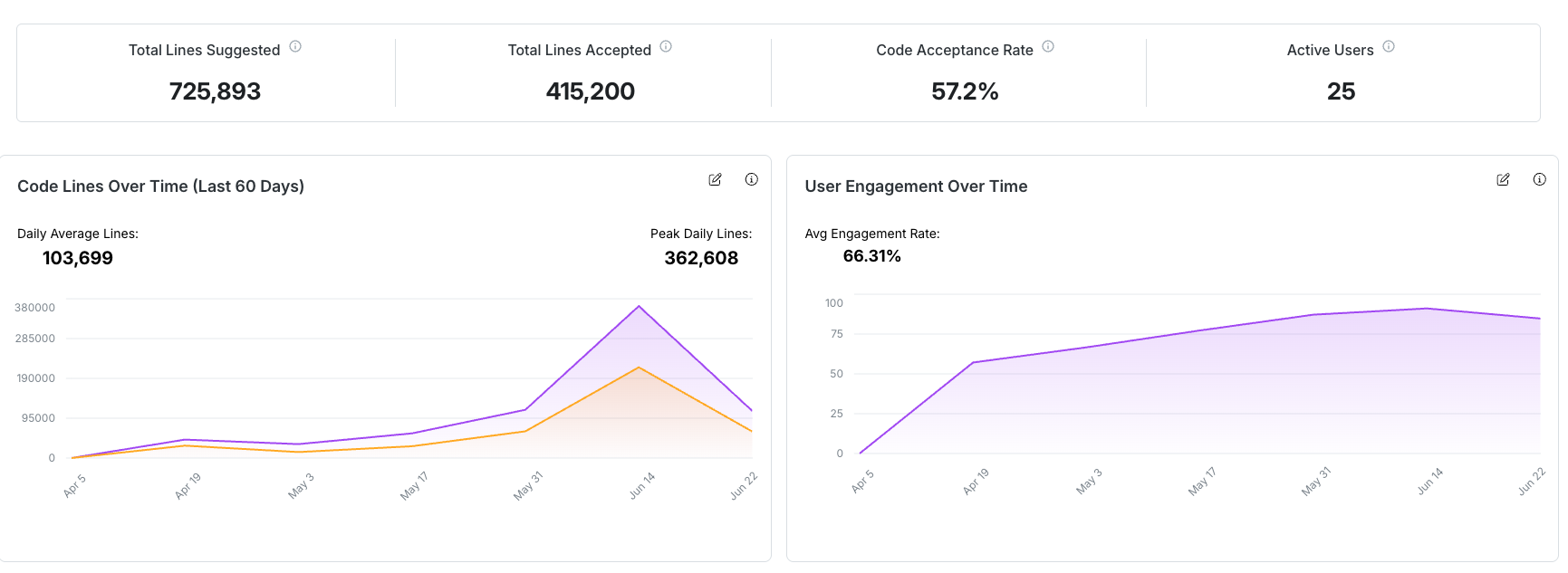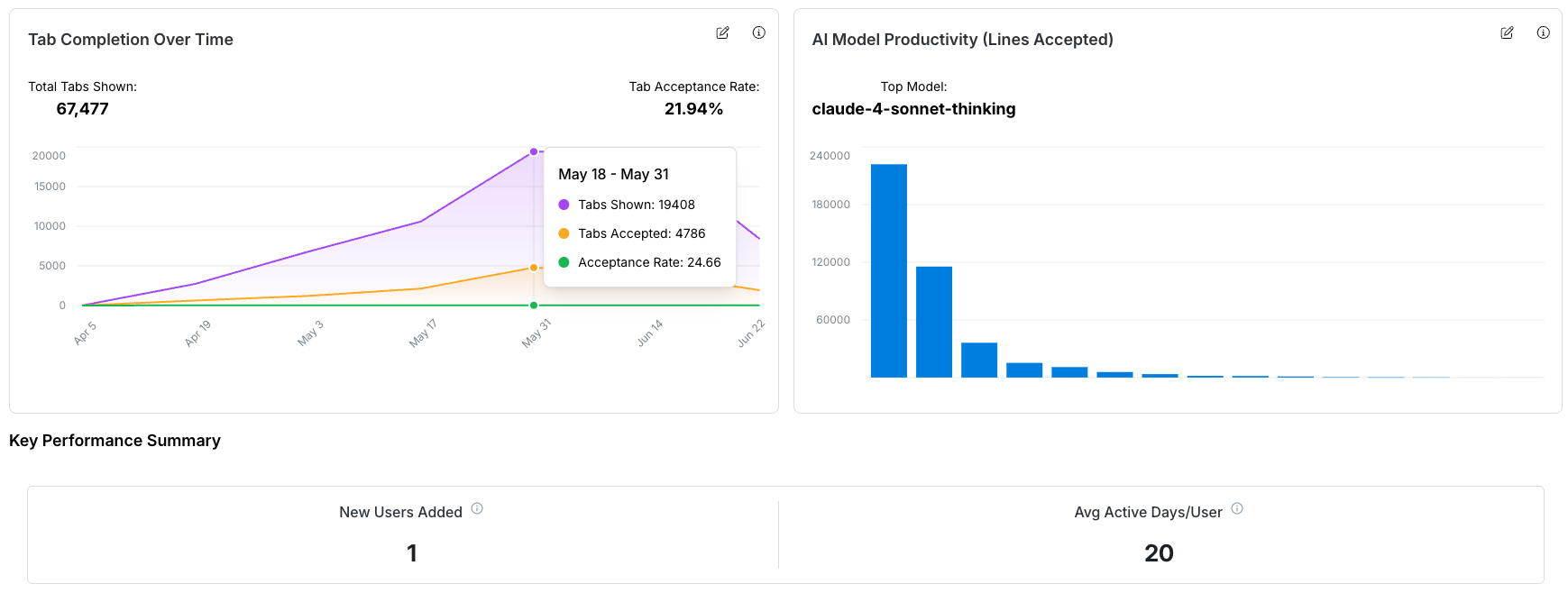Launched by Anysphere in 2023, Cursor promised to let developers “vibe code” across an entire repo with a single prompt. Unlike traditional IDEs, Cursor integrates real-time AI collaboration directly into the coding workflow, promising to accelerate development while preserving creativity. Stack Overflow’s latest survey shows 72% of professional developers either use or plan to use an AI assistant in their daily workflow. The question for leaders is no longer should we try one but are we getting real value.
But how has this promise translated into real-world usage? Let’s break down the data.
Adoption Surge: From Zero to Million Users
Cursor’s growth defies conventional SaaS trajectories. Within 16 months of launch, it amassed 1 million users, with 360,000 paying customers, a feat achieved almost entirely through organic, word-of-mouth adoption. This viral adoption is underscored by its financial trajectory:
- Revenue: Exploded from $1M (2023) to $100M (2024), projected to hit $200M in 2025.
- Valuation: Skyrocketed to $2.6B by January 2025, with talks of a $10B valuation underway.
What fuels this? Developers aren’t just trying Cursor, they’re embedding it in daily work. At companies like OpenAI, Shopify, and Perplexity, engineers use Cursor to automate routine tasks, from boilerplate generation to debugging.
Developer Productivity Gains:
Cursor’s impact on workflow efficiency is measurable:
- Developers report 20–25% time savings on common tasks like debugging and refactoring.
- 30–50% reductions in development cycles are seen in complex projects (e.g., full-stack apps).
- 40% fewer context switches and 30% faster onboarding for new hires, without sacrificing code quality.
These gains stem from Cursor’s deep integration of AI:
- Context-aware AI: Indexes entire codebases to provide project-specific suggestions.
- Plain language commands: Developers describe features in natural language (e.g., “Create a Fibonacci function”), and Cursor generates production-ready code.
Code Quality:
Speed means little without quality. Let’s talk about the quality of code coming out the other end:
- A BI career trend noted that companies like Visa, Reddit, and DoorDash now expect “vibe coding” skills, because AI-assisted developers are commonly up to 40% faster, without skimping on correctness.
- Cursor’s “Tab accept” logs indicate devs keep about 30% of total characters suggested in internal benchmarks, mirroring healthy selectivity seen with other AI tools.
- Cursor’s built-in AI review flags errors, suggests improvements, and explains its reasoning in plain English.
- One engineering team unlocked a 50% reduction in style-related PR comments and saw 40% fewer “style fix” commits once they enforced project-level Cursor rules.
Industry Adoption
Cursor’s rapid rise isn’t just a story of individual developers tinkering with the latest AI tool. What’s striking is how quickly it’s found a home across a wide spectrum of industries. From nimble startups to Fortune 500 enterprises, teams are weaving Cursor into their day-to-day workflows, not just for experimentation, but for real production-grade development.
| Sector | Who’s Using It | Impact/Stats |
|---|---|---|
| FinTech & Banking | Brex | According to Cursor’s study, 70% of their customers’ engineers actively use Cursor, and 45% of all code changes now originate from the platform |
| Stripe | Internal keynote calls Cursor a productivity multiplier after rollout | |
| HR / Workforce SaaS | Rippling | Seats jumped from 150 → 500 in weeks, ≈ 60% of the engineering org |
| Gig-Economy Marketplace | Upwork | Adoption went from 20% (Copilot) to “nearly 100%” post-Cursor; PR volume ↑ 25%, average PR size ↑ 100%, net code shipped ↑ 50%. 70% of devs save ≥1 hr/week. |
| Cloud & Big Tech | Amazon (pilot) | 1,500+ engineers in a dedicated Slack channel; internal poll shows Cursor beating in-house tools before full roll-out |
| Cross-industry Enterprise | Fortune 1000 | As per Cursor’s study, 53% of F1000 companies hold Cursor seats; >50k enterprises total; 100M+ lines of enterprise code written daily |
| Large Tech Top 1000 | NVIDIA, Uber, Datadog | Independent audit says >50% of the 1,000 biggest U.S. tech firms are active customers |
No matter the industry, Cursor is becoming a core part of how modern teams build, ship, and maintain software.
How Opsera Unified Insights Tracks Cursor Usage and Impact:
Opsera Unified Insights pulls in the fundamentals like build logs, CI/CD, security, scanner alerts, and more than 100+ DORA data and SPACE metrics, and persona-based dashboards with more than 150 KPIs so teams can already see delivery speed and risk in one place.
The newest release layers dedicated dashboards for Cursor and Windsurf, standing beside the existing GitHub Copilot dashboards, which means you can now track every mainstream AI assistant from the same console.

Open the Cursor overview in Unified Insights, and the answers are right there. One banner gives you the four signals that matter: Total Suggestions, Accepted Lines, Acceptance Rate, and Active Users , so you can tell in seconds whether Copilot is actually working for your team.

Beneath that, spark-line cards reveal how output, engagement, and acceptance trend day by day, while side-by-side bar charts rank top users, dominant languages, and the most productive models. It is the same raw Git and IDE telemetry your team already generates, stitched into clear visuals that tell you who is leaning on Cursor, where it helps most, and when it might be slipping.

Ready to see your own numbers?
The future of software development is collaborative, context-aware, and AI-powered. Cursor is leading that shift, and the data says it’s worth your attention. If you’re still using a traditional editor or haven’t tried an AI-native workflow, now’s the time to see what the hype is about.
Opsera Unified Insights now ships with out-of-the-box dashboards for Cursor and Windsurf alongside Copilot. Start a free trial and turn raw AI enthusiasm into measurable results.




